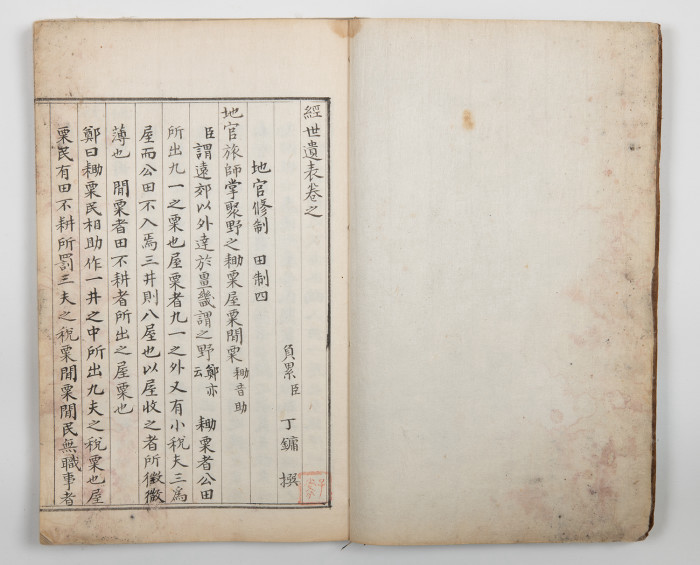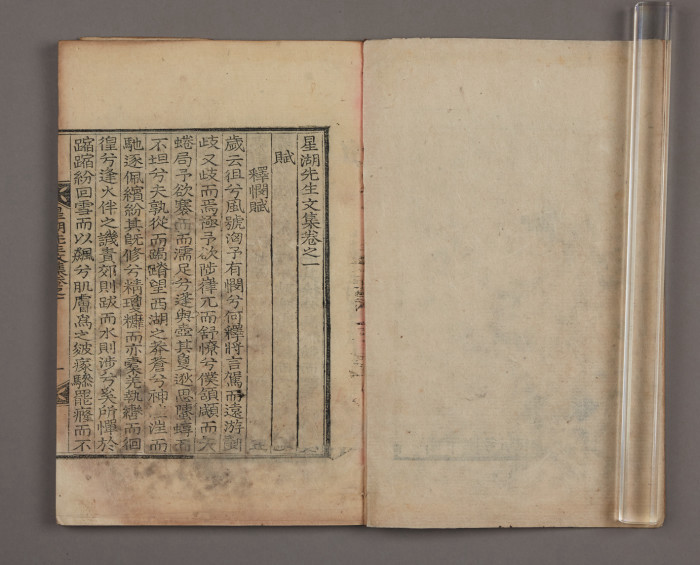GyeongGi Cultural Foundation
Gyeonggi-do, the birthplace of Silhak
The 2020 Joongbu Ilbo series 〈Gyeonggi-do Museum〉 is a content produced in a total of 10 series by the GyeongGi Provincial Museum, which has undergone a complete reorganization of the exhibition hall in celebration of the 25th anniversary of its opening. If you would like to see more detailed 〈Gyeonggi Province Museum〉, you can enjoy it in the original text on the Jungbu Ilbo website. |
Gyeonggi, the center of reform in the late Joseon Dynasty

[Photos] Statue of King Gongmin and Princess Noguk (GyeongGi Provincial Museum)
This is a portrait of a couple in which King Gongmin, the 31st king of Goryeo, and his maintenance, Princess Noguk, sit side by side. In the Goryeo Dynasty, the Gyeonggi Province, which had a strong intellectual character, was divided into Gyeonggi left and right degrees.
Originally, the meaning of Gyeonggi, unlike Gyeonggi-do as an administrative district today, is a term composed of the capital'Gyeong (京)' and'gi (畿)' which is the area around the capital. In this way, Gyeonggi was a space set up to protect the provincial town in which the monarch resided and to support the function and role of the town. In our history, “Gyeonggi” first appeared in 1018, during King Hyeonjong of Goryeo. A thousand years ago, the signpost of Gyeonggi was raised, but due to the spatial limitation of the periphery of the capital, the area of Gyeonggi, centered on the capital city Gaeseong in the Goryeo Dynasty, and Hanyang, the capital during the Joseon Dynasty, was decided.
Gyeonggi, which had a kind of direct intellectual character as a space under the governing power of the emperor, not the capital nor the province, has an administrative status distinct from the capital. In the Joseon Dynasty, Gyeonggi was emphasized as a space that provided the physical foundation for bureaucrats, and as a military base to protect the capital.

[Photo] The Museum of Silhak
This is a national reform policy book written by Dasan Jeong Yak-yong in 1817. The reform principles of all systems such as the control, land system, and tax system, including the reorganization of administrative organizations, are presented.
The center of transportation and logistics
It was only in the late Joseon Dynasty that Gyeonggi emerged as the center of Seoul rather than the periphery. With the explosive population increase in the late Joseon Dynasty, Seoul has evolved from an administrative city to a new economic city. Accordingly, Gyeonggi has also been noted as a major transportation destination for the capital, and the economic and spatial scope of Gyeonggi has expanded as a large number of people from all over the country lived there.
During the Joseon Dynasty, the nationwide transportation network was built radially around the capital, Hanyang. Gyeonggi, located on the outskirts of Hanyang, was a path through these roads. The road through Gyeonggi gradually increased due to the expansion of the distribution economy after the 18th century. Gyeonggi played the role of the expanded capital, the “capital region”. It has become a region of all four months.
Since the 18th century, traffic routes that erupted in Hanyang expanded and diverged from Gyeonggi-do. Major arterial roads, so-called 6-daeros and 10-daeros, stretched from Hanyang to all over the country. Gyeonggi was the first point of the arterial road starting from Hanyang. On old maps of the late Joseon Dynasty, such as Haedong Map and Yeojido Book, branch roads in the Gyeonggi area are marked. The diversification of branch roads shows that there have been frequent use of transportation routes and active human and physical exchanges.
As a gateway and route to the capital, Gyeonggi has grown into an area where various information and logistics are gathered. It has become a place that has the capacity to present alternatives to meet the spirit of the times of openness and reform, not the area around the capital. It was no coincidence that “Silhak” was born in the Gyeonggi area as a new academic trend with reform and openness in the late Joseon Dynasty.

[Photo] Seonghojip (GyeongGi Provincial Museum)
It was originally compiled in 1774, 11 years after Seongho's death, but was published in 1917 by a literary group of Seongjae Heojeon, who succeeded in the schoolwork of his student Sunam Ahn Jung-bok in 1917.
The GyeongGi that Silhak was born in
Silhak in the late Joseon Dynasty is a new academic trend that was born in the process of devising a plan to improve the lives of the people by reforming the old and old system of the country. Of course, in the birth of Silhak, various reform policies in the 17th and 18th centuries were also of great strength. The Daedong Act, which was implemented after 100 years of hard work from 1608 to 1708, the Myung-yeok Act made in 1750, the abolition of the new government laborers in 1774, and the abolition of the abolition of the fugitive public servants. It was measures. The problem is that these series of reform measures were inadequate to solve the people's grievances.
Centering on the interests of Seongho in the 18th century, South Korean scholars in the Gyeonggi region were pushed out of the mainstream politics. They devoted themselves to learning in their hometowns, and they were always watching the lives of the people. Because of this, they were well aware of what the people's suffering was and how to make their lives stable. To improve this, overall national reform was required, including the land system, tax system, status system, management selection and appointment, and central and local administrative systems.
The first priority in national reform was institutional reform. Seongho Iik argued, "No matter how perfect a law is, it is natural that if it is old, it will be bad, and if it is, it will have to be fixed." Dasan Jeong Yak-yong, who inherited the idea of profit reform, believed that Joseon should be renewed. He wrote a book containing a national reform plan called “Gyeongseyupyo”, saying, “It is the principle and reason of the world that the system must be changed according to the flow of the times.” “After the Imjin Invasion, all kinds of laws were broken and everything was cluttered, so there was nothing that was not a problem.
Silhak, which was born in the late Joseon Dynasty, is understood to have been established mainly by male scholars who had a base of life in the Gyeonggi region. Earlier, Widang Jeong Inbo summarized the genealogy of Silhak in the late Joseon Dynasty as "Bangye is Iljo (一祖), Sungho is Leejo, and Dasan is 3jo." Banggye-Seongho-Dasan is still recognized as the main axis of the Silhak lineage in the late Joseon Dynasty. Ban-gye Hyung-won is the founder of Silhak, Seong-ho and Iik systematized Silhak, and Dasan Jeong Yak-yong is the culmination of Silhak. All three of these men were politically of male origin, and were from Gyeonggi-do or have a connection.
-Sunghee Chung (Curator Researcher, GyeongGi Provincial Museum)-
<Copyright(c)2002 GGC All rights reserved.>
- Writer
- GyeongGi Cultural Foundation
- About
- Everything about the GyeongGi arts and culture, GGCF
- homepage
- https://www.ggcf.kr/